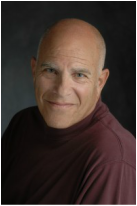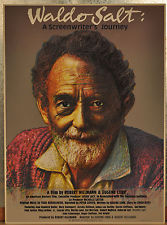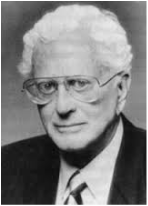
Going For It: The Partnership of Balance Between Right Brain and Left Brain in Writing
Among the professional creative writers I know, Tom Lazarus is probably the most prolific. We worked together on NBC’s Hunter, and I later worked for him on Freddie’s Nightmares. He worked on a broad range of other shows before and after that, as he continues to be a much sought-after screenwriting teacher at UCLA Extension’s Writer’s Program.
From the beginning of my decades-long relationship with Tom, I was long struck by his ability to conceptualize, develop and execute on his writing projects with remarkable speed and impressive quality. This writing ranged from teleplays, screenplays, stage plays, novels and more (he also authored the book Secrets of Film Writing). His film Stigmata made number one in the box offices on its opening week. Tom is also a gifted and accomplished painter and maybe that’s one of the keys to understanding his prolific nature. When he and I talked about his writing process, he hinted at the idea of letting the right side of the brain take the lead, however, since I still had the left side judging filtering the information when it’s being heard, I wasn’t capable at the time of incorporating it right away. I had to challenge it and deliberate, take it to the committee inside my head.
Essentially the practice boils down to being reliably able to tap into the right side of the brain, the creative side. Too often writers allow the left side, the critical side, to enter into the equation much too early, as a creative concept is being developed. And too often this critical editing process hamstrings the nascent creative process. Too much judgment too early and too often in the creative cycle can, and almost certainly will, inhibit and smother the force of the vision. For a painter (my mother was an accomplished painter) it’s all about execution in the moment, delivering the inner vision, and that’s what Tom does so well with his writing. The great thing about writing now, of course, is that one can edit and change after the rough drafts, especially with so much writing being done on computers.
Long before I had learned this lesson, and I was struggling with editing and changing concepts as they were evolving, debating the merits of different elements, and getting sidetracked on different story and character possibilities, Tom was off and running like a stallion out on the range, riding free. I have since learned from his model and successfully adopted it. And in doing so, I find the left side judgmental process has woven into a more cooperative balance with my creative side. Instead of stopping or side tracking the process, it’s almost like an inner coach say ‘don’t forget this’… and ‘what about this.’ It’s like a partnership now. And I enjoy ‘the ride’ much more, without having the other critical and dominant voice inside my head challenging and blocking the creative force before it really has a chance to define itself.
Among the professional creative writers I know, Tom Lazarus is probably the most prolific. We worked together on NBC’s Hunter, and I later worked for him on Freddie’s Nightmares. He worked on a broad range of other shows before and after that, as he continues to be a much sought-after screenwriting teacher at UCLA Extension’s Writer’s Program.
From the beginning of my decades-long relationship with Tom, I was long struck by his ability to conceptualize, develop and execute on his writing projects with remarkable speed and impressive quality. This writing ranged from teleplays, screenplays, stage plays, novels and more (he also authored the book Secrets of Film Writing). His film Stigmata made number one in the box offices on its opening week. Tom is also a gifted and accomplished painter and maybe that’s one of the keys to understanding his prolific nature. When he and I talked about his writing process, he hinted at the idea of letting the right side of the brain take the lead, however, since I still had the left side judging filtering the information when it’s being heard, I wasn’t capable at the time of incorporating it right away. I had to challenge it and deliberate, take it to the committee inside my head.
Essentially the practice boils down to being reliably able to tap into the right side of the brain, the creative side. Too often writers allow the left side, the critical side, to enter into the equation much too early, as a creative concept is being developed. And too often this critical editing process hamstrings the nascent creative process. Too much judgment too early and too often in the creative cycle can, and almost certainly will, inhibit and smother the force of the vision. For a painter (my mother was an accomplished painter) it’s all about execution in the moment, delivering the inner vision, and that’s what Tom does so well with his writing. The great thing about writing now, of course, is that one can edit and change after the rough drafts, especially with so much writing being done on computers.
Long before I had learned this lesson, and I was struggling with editing and changing concepts as they were evolving, debating the merits of different elements, and getting sidetracked on different story and character possibilities, Tom was off and running like a stallion out on the range, riding free. I have since learned from his model and successfully adopted it. And in doing so, I find the left side judgmental process has woven into a more cooperative balance with my creative side. Instead of stopping or side tracking the process, it’s almost like an inner coach say ‘don’t forget this’… and ‘what about this.’ It’s like a partnership now. And I enjoy ‘the ride’ much more, without having the other critical and dominant voice inside my head challenging and blocking the creative force before it really has a chance to define itself.


 RSS Feed
RSS Feed
